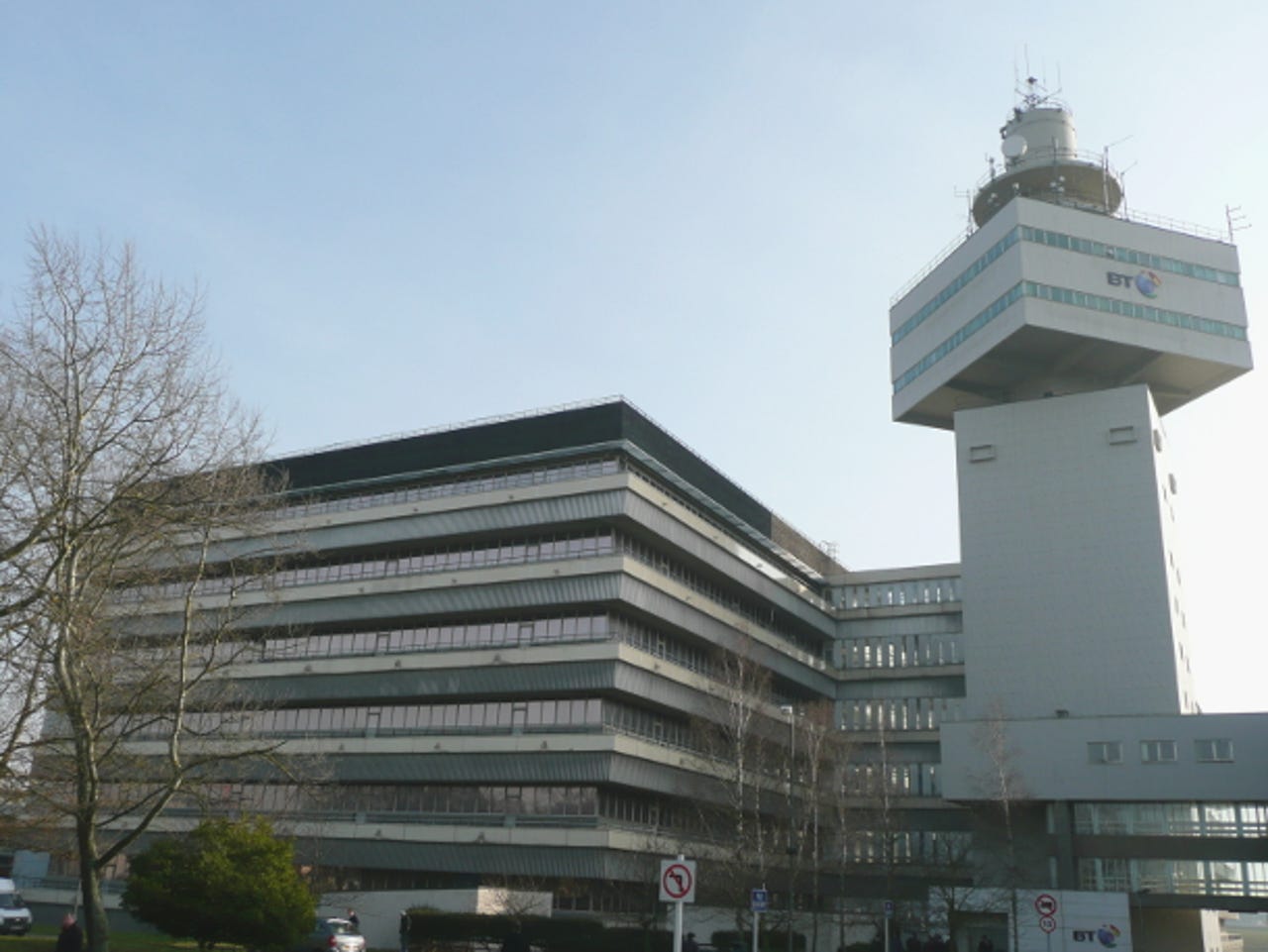BT's R&D lab: From web 2.0 customer care to cross-border collaboration


Photos: Having a moan on Twitter? BT aims to answer you
BT opened the doors of one of its main research and development centres to silicon.com to show off what new tech it is cooking up in its labs.
The centre, based at Adastral Park in Ipswich, Suffolk, has been a research centre for the telecoms giant for decades.
Today the lab, known as a Global Development Centre (GDC), is focused on developing new software for BT and its customers, and works alongside four other GDCs based around the world.
Photo credit: Nick Heath/silicon.com
BT spreads work between its five GDCs which are as far apart as Pune in India and Dallas in the US.
To help the centres work together BT has developed a system that's aimed at letting staff collaborate as effectively as if they were in the same room.
The system is called the BT Collaboration Station and consists of an interactive whiteboard, flat-panel TV and video-conferencing equipment.
The whiteboard will display the same image in two different locations, for example if somebody in the Pune GDC draws a smiley face on the board the face will appear in real-time on the whiteboard in the Ipswich GDC, as seen below.
The system allows engineers and developers based thousands of miles apart to work together in drawing technical diagrams or writing project briefs on the board. The whiteboard can also display a projected image from a computer allowing staff to collaborate on computer work.
BT staff in both locations will be able to see each other on the video screen and talk to each other using phone conferencing.
BT wants to have hundreds of the stations based at GDCs and BT Global Service Centres across the world, with about 50 planned for use at Adastral.
Each station is linked by a 2Mbps connection, a relatively low-bandwidth link, to allow the large numbers of connections at once.
Russell Strevens, director of OpenReach technical delivery hub, said the technology had helped developers deliver the infrastructure for the trial of superfast broadband in London in July last year.
He said BT's ability to launch the trial within a relatively short space of time was "in a large part down to the adoption of the new operating model that allows us to cope with a lot of churn".
Photo credit: Nick Heath/silicon.com
![]()
If you ever feel the need to Twitter about a gripe with the service provided by BT you might find your tweet answered by the telco's customer services.
BT has developed a system called Debatescape that trawls up to 12 sites and forums - including Facebook, Twitter and YouTube - looking for customer complaints about the telecoms giant.
Once it finds a complaint the system will forward the message to a BT customer service rep to deal with.
That rep will reply to the disgruntled customer on the site or forum where the complaint was made, as can be seen above, and ask for more details about what went wrong and how they can help.
The Debatescape software searches sites for keywords commonly associated with customer complaints to BT and screens out false matches using grammatical and semantic analysis.
It is being used to refer up to 800 complaints in a single day referring to both BT's residential and business services.
The Debatescape system has been running since April and BT is resolving about 3,000 cases of dissatisfied customers each month that have been flagged up by the Debatescape system.
Kevin Woollard, head of product, customer experience and sustainability at BT, said: "This gives us an opportunity to turn people who were motivated to publish complaints about BT and turn them into advocates.
"If we can stop customer churn then there is a real value to that."
Photo credit: BT
This piece of software manages a business' IT network, automatically matching computing resources to where they are most needed.
A prototype of the system is being used at Adastral Park and BT is also conducting trials of the technology with several customers.
The software can monitor the amount of storage, computing power or network bandwidth that is being provided to each application running on a corporate network.
It can then adjust each of these resources based on demand, for example if video playback becomes choppy because of limited network bandwidth, as seen above, it could increase the available bandwidth to produce smooth playback.
The system can also be set to monitor the performance of an application and allocate more resources to that app when its performance falls below a certain level, for example when an application takes longer than a certain number of milliseconds to respond to a user.
The amount of computer processing power or storage available to an application can be adjusted by the system by diverting resources from virtualised servers or storage.
Network managers can set how much or little bandwidth, processing power and storage each application is allocated, with the system adjusting each resource in real-time to ensure no one application is getting too much or too little.
Photo credit: Nick Heath/silicon.com
The Alliance Mashboard can provide organisations with real-time, easy to understand updates on the status of corporate systems.
The mashboard is a set of customisable widgets that can display XML-tagged information feeds about how a business' systems are running.
This example shows how well a corporate helpdesk is performing, using graphs and charts to show information like the number of calls to the helpdesk and the server availability.
The mashboard is a proof of concept development, aimed at allowing employees and managers to monitor both internal systems and outsourced services.
The widgets can be customised from drop-down menus to change settings, such as background colour or chart type.
Photo credit: BT